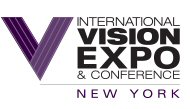In an article in Optometric Management, the editor offers six tips to maximize your patient flow for increase profitability.
Tip 1: When it comes to administration think “e”. By allowing your patients to schedule appointments and fill out patient forms online, you can free up to 45-minutes a day for your employees and free up time for your patients as well.
 Tip 2: Utilize high-tech equipment. The use of high-tech equipment in both diagnostics and production is key to increasing practice profitability. <end article> With the Q-2100 Digital Lens System you can produce free form quality lenses at a fraction of the time and cost as with traditional labs. Dispensing lenses with just-in-time delivery will be noticed by your customers and they will return with repeat business. Everyone wants things quickly and efficiently and this in-office technology allows you meet the expectations of the consumer. <begin article>
Tip 2: Utilize high-tech equipment. The use of high-tech equipment in both diagnostics and production is key to increasing practice profitability. <end article> With the Q-2100 Digital Lens System you can produce free form quality lenses at a fraction of the time and cost as with traditional labs. Dispensing lenses with just-in-time delivery will be noticed by your customers and they will return with repeat business. Everyone wants things quickly and efficiently and this in-office technology allows you meet the expectations of the consumer. <begin article>
Tip 3: Delegate. Don’t try to be the keeper of all the knowledge. Share information and give your employees the opportunity to grown and expand their abilities in the work place.
Tip 4: Provide staff training. Do multiple people know how do do the same job? If not, they should! Cross train your staff in dispensing, lens production and administrative tasks. By cross training your team you will operate at peak efficiency.
Tip 5: Schedule weekly staff meetings. Industry leading consultant Dr. Richard Kattouf recommends you schedule weekly staff meetings at which discussions on how to refine individual responsibilities are discussed to maintain efficiency and enthusiasm.
Tip 6: Value your time and your patient’s. Time is important to everyone. By focusing on efficiency creating choices, you will see an improvement in the time you and your patients spend at the business. Your family will appreciate it and so will your customers.








 The vision Council Market Research team conducted its yearly VisionWatch internet influence study and found that online sales reached over 2.1 billion in 2018. The study surveyed over 4,900 respondents who shared information regarding their online habits when shopping for and buying eyewear.
The vision Council Market Research team conducted its yearly VisionWatch internet influence study and found that online sales reached over 2.1 billion in 2018. The study surveyed over 4,900 respondents who shared information regarding their online habits when shopping for and buying eyewear.